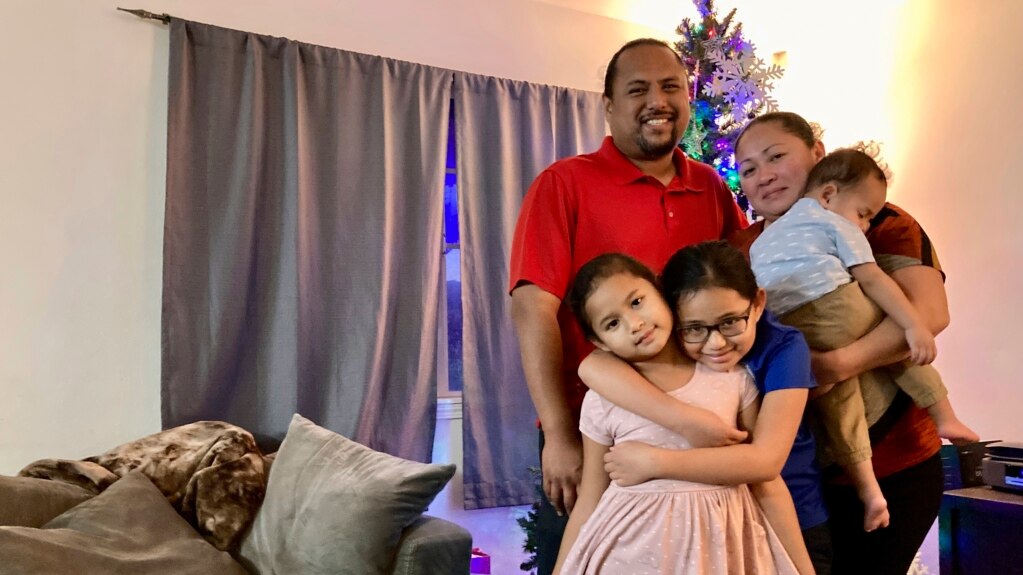Just because your family is native to an area, it does not mean you will be able to live there forever. Increasingly, many Native Hawaiians are leaving the island, known as the paradise of the Pacific, for the mainland United States.
As a Native Hawaiian, Kona Purdy never wanted to live anywhere else. He wanted his children to grow up in the same place as their ancestors, close to Honolulu.
Hawaii is one of the costliest places to live in the U.S. The Forbes Home study finds that people spend over 40 percent of the money they earn each month on their rent in Hawaii. California comes in second, but people there pay much less, about 28 percent.
Purdy said he did not mind living in a small living space if it meant he could be close to the mountains and the ocean. He and his small family shared a house with other relatives. Their part of the rent for the house was $2,300 per month. Rent is the money people pay an owner for the right to live in a home. When the cost went up, Purdy decided he had to move to a less costly place.
“I was so busy working… We never took our kids out to the beach. We didn’t go hiking,” he told the Associated Press.
In 2017, Purdy moved his four-person family to the state of Nevada. It was a hard choice, but the family found a larger living space for $1,000 per month just outside of Las Vegas. They chose Las Vegas because it is a common place for people from Hawaii to visit.
And, it is much less costly to live there. For example, a home that is priced at $300,000 in Las Vegas would cost over $1 million in Hawaii. Terry Nacion, a Native Hawaiian, works as a representative for home buyers and sellers. She left Hawaii for Las Vegas in 2003 because of the high cost of home ownership. “Back home, you either had to have your home passed down to you or you have to work four jobs,” she said.
The Purdys are not alone.
In 2011, the American Community Survey found that there were nearly 300,000 Native Hawaiians in Hawaii and about 221,000 in the mainland U.S. Just 10 years later, the numbers changed. In 2021, about 370,000 Native Hawaiians lived in other states and only about 310,000 lived in Hawaii.
Kona Purdy said it was “painful” to be apart from the land where he was born. He said the family felt like “a fish out of water,” living in Las Vegas.
However, just months after Purdy moved his family to Las Vegas, 20 other relatives, including his mother, uncle and sister, followed them. Even though they were thousands of kilometers from home, the Hawaiian culture was all around them. The area is full of restaurants that serve Hawaiian food and cultural events celebrating Hawaiian people.
“You go into any store in any part of the valley and you’ll find someone from Hawaii working there or shopping there,” Purdy said.
But in 2021, four years after leaving Hawaii, the Purdys decided to move back to the island. Purdy’s wife wanted to return to care for her mother. Their daughter got into a very good school in Honolulu which offered more opportunities for Native Hawaiian children.
The family again shares a house with other relatives. The costs are high. There is not much time to take hula lessons or go to the beach. But the Purdys feel good about returning home.
“It’s a grind, it’s hard, it’s really expensive,” he said. “But I also feel like we’re exactly where we’re supposed to be right now.”
Tommy Waters, a Native Hawaiian, leads the city council in Honolulu. He has five brothers and sisters, and none live in Hawaii anymore.
“There’s no Hawaii without Hawaiians,” he said. “That’s just incredibly sad to me, that Hawaiians cannot afford to live in Hawaii.”
I’m Dan Friedell.
Dan Friedell adapted this story for VOA Learning English based on a report by the Associated Press.

